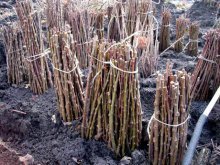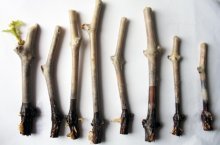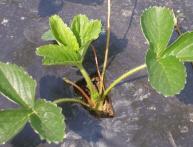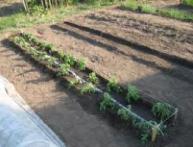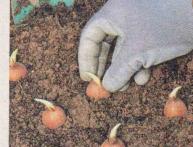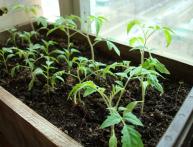How to plant grapes from cuttings?
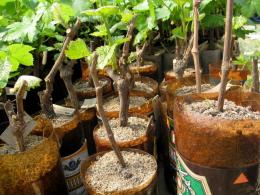
In nature, there are many well-known plants that people actively use. Their properties and applications are very wide, since the set of available qualities can bring enormous benefits. One of these plants is grapes. We love to enjoy drinks made from grapes, we actively use cosmetics based on them, but we have no idea that in order to grow them, you need to spend a lot of time and effort to obtain a strong and productive plant.
Content:
Description and properties of grapes
Grapes are a world-famous fruit plant. It can be found in most countries of the world. This is due to its enormous popularity and degree of application. Grape fruits contain many useful substances:
- Cellulose
- Vitamin B
- Sugar
- Organic acids
- Enzymes
- Microelements
Grape has a positive impact on the activity of bone marrow, helps in the production of blood in the body. One glass of grape juice contains the daily requirement of vitamins B and C. Moreover, the absorption of the latter is especially active, since grape fruits contain components that accelerate the absorption of the “health vitamin” by the body.
Grapes are recommended for patients with reduced digestive function of the stomach. The antioxidant content allows the extract of this plant to be used for the production of cosmetics.Such substances include:
- Tannin
- Anthocyanin
- Rasveratol
In addition, metabolism is normalized, blood saturation occurs. When choosing grapes, do not forget that today there are about eight thousand varieties known in the world, each of which has its own unique properties.
Grape propagation
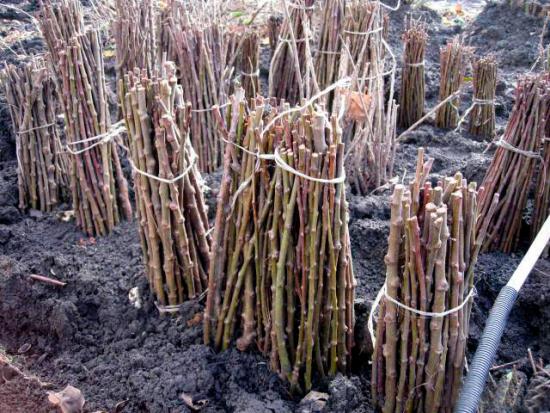
One of the most popular ways to propagate grapes is cultivation based on green cuttings. To carry out this procedure, it is necessary to carry out a number of actions:
- Take cuttings in spring before flowering begins.
- Immediately place the cut cuttings in clean water or a light nutrient solution
- Remove the cutting from the water for a while
- Cut the cuttings into pieces with two buds
- Place the cut pieces back into the water or nutrient solution.
- Make an angled cut on the bottom of each cutting.
- Plant the finished cuttings in a box or separate small pots/cups
- After active summer growth, seedlings must be placed in the cellar for autumn-winter storage.
- After winter hibernation, seedlings are planted in buckets for summer germination
- Plant the resulting seedlings in September
These actions must be carried out in strict sequence without disturbing the order, otherwise the seedlings will die. Cutting cuttings in the spring is due to the fact that seedlings require strong, fresh parts of the plant that can strengthen after cutting and begin to grow.
The need to use water or a light nutrient solution is determined by the needs of the plant, which, like humans, requires a minimum set of nutrients for its preservation.
Section of cuttings taking parts and preparing cuts is necessary so that the plant can grow and settle into its new environment. A fresh cut helps the cutting find a connection with the earth for metabolism.
Planting prepared cuttings back into the ground is a labor-intensive process. It is necessary to prepare a good nutrient medium for the future plant so that it can survive and begin to actively develop.
The period of autumn-winter hibernation is characteristic of all plants whose seedlings take more than one season. They must be kept in a viable state so that they can begin to grow at the beginning of the next season. After the grape cuttings are connected, they can be planted in open ground in September. This will be the final point in grape propagation from cuttings.
Harvesting cuttings
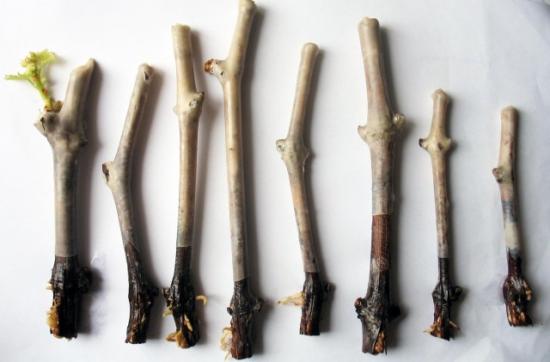
To spend seedlings of grape cuttings, it is necessary to pre-prepare them before the winter period. Preparation begins with the autumn cut. In this case, it is necessary to carry out a number of actions:
- Trim cuttings with shoots with diameters of 7-10 millimeters
- Cut off all shoots, tendrils, leaves and immature tips on the cuttings
- Leave four buds on the cuttings
- The cutting is cut at an angle several centimeters above the top bud.
- Three cuts up to three centimeters long are made on the lower part
- Label each cutting according to the variety and connect into bundles
- Bunches are placed in water for a day
- The bundles are etched with a 5% solution of copper sulfate and dried
- The bundles are wrapped in a plastic bag and sent for storage in the refrigerator or cellar
Trimming cuttings is a very important step in preparation for further seedlings.Incorrect cutting of grape parts will not allow you to save the resulting cuttings until spring, because... they will simply dry out and die. Removing excess parts is necessary so that the cutting retains its ability to grow as much as possible.
The four buds left on the cutting provide the necessary springboard for stimulating the spring growth of the cutting and its establishment in the ground. An incision at an angle in the upper part of the cutting, as well as making three vertical cuts from below, ensures the connection of the harvested cuttings after seedlings into the soil for normal metabolism in the plant.
Variety marking is necessary to ensure that plants do not die. Being in a closed environment in a state of hibernation, different varieties are able to infect each other, selecting useful substances for growth. Being in a homogeneous environment, grape cuttings will not preserve each other.
Treatment with water and vitriol solution is necessary to create a supply of nutrients for hibernation. In such conditions, grape cuttings will be able to safely survive the winter cold.
Plastic wrap allows you to preserve the viability of harvested cuttings. They will not open prematurely and will not die from the cold.
Planting cuttings
Planting grape cuttings begins in the spring. A couple of weeks before planting in open ground, the blanks are planted in small glasses so that the plant can adapt and come out of hibernation. Before this, the cuttings must be moistened with warm water and kept in this state for two days.
Germination in glasses is carried out as follows:
- Prepare plastic glasses with three small holes in the bottom
- Pour a mixture of soil and leaf humus into glasses in a two-centimeter layer
- Sprinkle a small layer of washed sand on top
- Make a four-centimeter depression in the center of the earthen mixture and place the cutting there
- Fill in another four centimeters of this earthen mixture and pour water over it.
After germination in glasses, you can transplant the awakened cuttings into open ground. Professionals and amateurs alike recommend doing this no earlier than the moment when the average daily air temperature is above zero degrees. In this case, it is necessary to prepare the landing site. In this case, it is recommended to pre-treat the planting site with urea and moisten it a little with water. After this, you need to wait a pause of two hours and you can safely start planting grape seedlings.
Planting grapes, like any other cultivated plant, seems to be a simple process only at first glance, but in reality everything looks completely different. It’s not enough to just cut off a branch and stick it in the ground, watering it with water. It will be necessary to carry out painstaking preparation in the form of cutting blank cuttings, which also have to be carefully processed. Next, you need to save the prepared material during hibernation, and then carefully “wake up” the seedlings. so you have to be patient.
Watch the video for the intricacies of planting grapes from cuttings:
Interesting information about the vegetable garden

